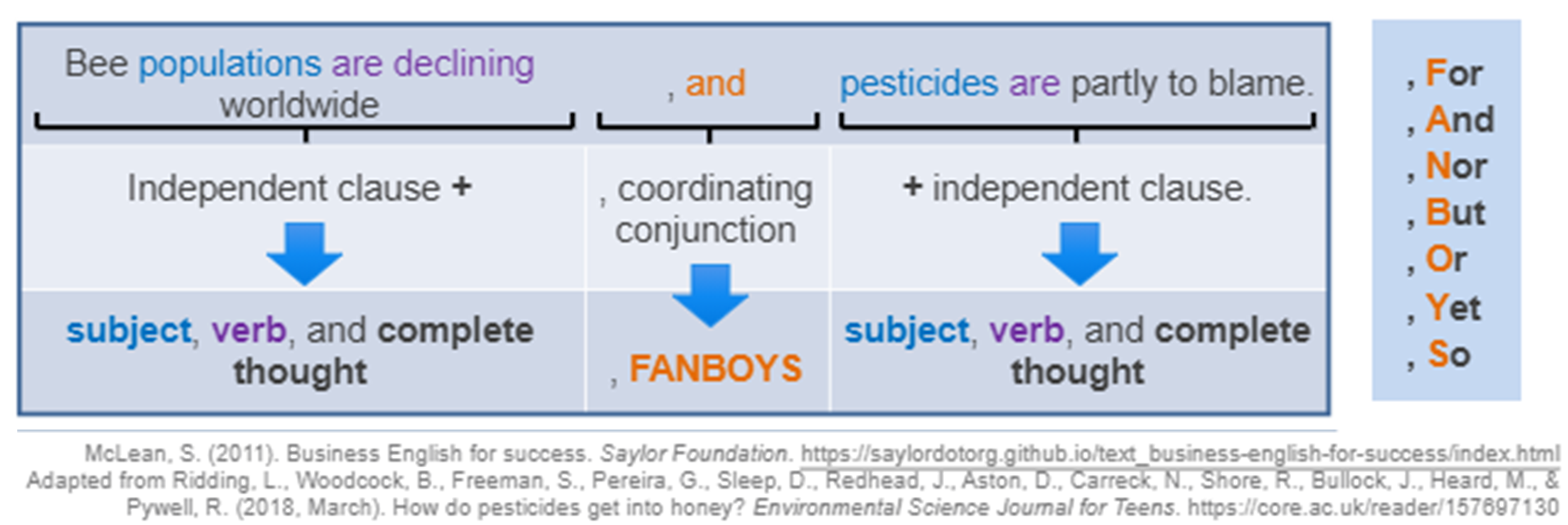21 Sentence Structure: Complete Sentences
Complete Sentences
A complete sentence contains at least one subject, a verb, and it expresses a complete thought. If a sentence is missing a subject, verb, or complete thought, it is incomplete.

Types of Sentences
Simple Sentences
A simple sentence is one independent clause; it has one subject, one verb, and is a complete thought.

Compound Sentences
A compound sentence is when you join two independent clauses together using a coordinating conjunction. The most common coordinating conjunctions form the acronym FANBOYS.

A compound sentence must have an independent clause on either side of the FANBOYS. Some sentences may appear to be compound sentences because they contain a FANBOYS; however, these may not have an independent clause after the FANBOYS.
Complex Sentences
A complex sentence is when a dependent clause is joined with an independent clause. The dependent clause will contain a subject and a verb; however, it is incomplete. All dependent clauses begin with a subordinating conjunction

Subordinating conjunctions can appear at the beginning, middle, or end of a sentence.



